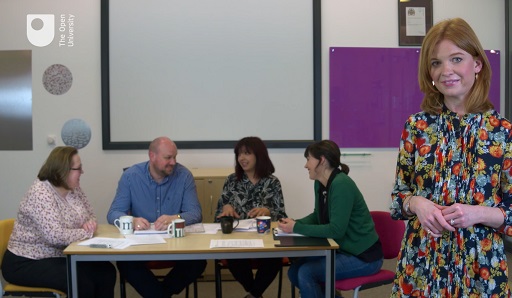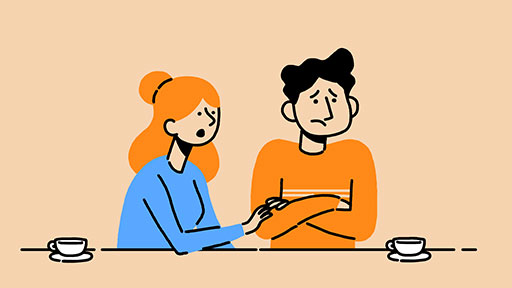2 Non-verbal communication
In a Functional Skills English Level 2 or an Essential Skills Wales Communication Level 2 discussion, you gain marks for using appropriate non-verbal communication.
Non-verbal communication is all about the subtle cues between people that give an idea of how they are feeling. Non-verbal communication can include body language, tone of voice, facial expressions and hand gestures.
When you speak, much of the message that you convey comes through your tone of voice and body language rather than the words you use. This means that whether you are trying to persuade your friends to watch the movie you like, presenting information at a staff meeting or answering questions at a job interview, it is important that you always use positive body language.
Activity 6 Non-verbal body language
Watch the short video below. Make a note of all the non-verbal signals that are demonstrated.

Transcript
Discussion
The video features both positive and negative non-verbal signals.
Leaning in shows that you are actively listening.
Leaning back can suggest that you are not interested in the discussion or even feel hostile about it.
Folding your arms gives a signal that you are not interested in what’s going on.
Relaxing your arms, so that they hang comfortably at your sides, or resting your hands in your lap, shows that you are open to what others are saying.
Talking with your hands and emphasising words with gestures can make you appear more credible and assured.
Making eye contact lets others know you are interested in the conversation.
Nodding and smiling are ways of showing empathy and letting others know you understand what they are saying. Laughing is another way of doing this – when appropriate.
Activity 7 Positive body language
Decide whether each of the pictures below shows generally positive or negative body language or elements of both.
a.
Positive
b.
Negative
c.
Both
The correct answer is c.
Discussion
Both people in this picture are making eye contact and look engaged in the conversation. They are turned towards each other and their arms are open rather than folded.
However, they are leaning away from each other and neither is smiling. He seems to be pointing in her direction.
This picture seems to show both positive and negative body language.
a.
Positive
b.
Negative
c.
Both
The correct answer is c.
Discussion
This man looks very relaxed, happy and confident! But his body language seems a bit too informal, as his shoes are off and his feet are up on the desk. His body language – and his feet! – could make someone who is talking to him feel quite uncomfortable.
a.
Positive
b.
Negative
c.
Both
The correct answer is a.
Discussion
Both people here look interested in the discussion. They are leaning in slightly and are focused on whatever is on the sheet of paper. The woman is pointing something out with her pen and smiling. The body language is positive.
a.
Positive
b.
Negative
c.
Both
The correct answer is c.
Discussion
The woman on the right is displaying negative body language: she has her arms folded and her expression suggests she doesn’t believe or agree with what is being said. The man to her left has a more neutral expression, although he looks a little concerned. His body language is more open.
a.
Positive
b.
Negative
c.
Both
The correct answer is a.
Discussion
The woman talking in this picture is using her hands to emphasise her point and her arms are open. She seems to be making eye contact with one of her listeners; her body language is positive. The woman next to her is making eye contact and looks as if she is really listening.
a.
Positive
b.
Negative
c.
Both
The correct answer is a.
Discussion
These two women look happy to be making contact! They both smile and look at each other as they shake hands. Both show positive body language.
a.
Positive
b.
Negative
c.
Both
The correct answer is c.
Discussion
The man on the left looks frustrated and upset. He is grimacing, his eyes are closed and he looks as if he wants to tear his hair out. His body language expresses very negative feelings.
The woman on the right, however, looks concerned but calm. Her facial expression is open. She is leaning towards him and reaching out to comfort him. Her body language is positive.

